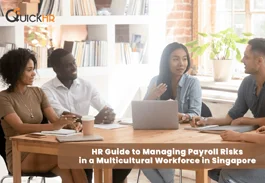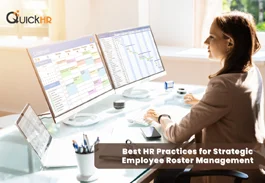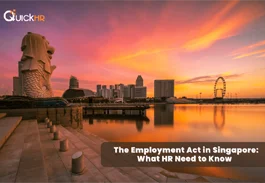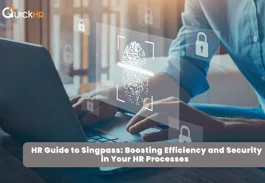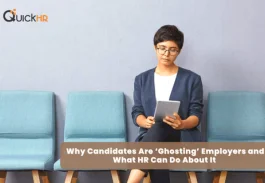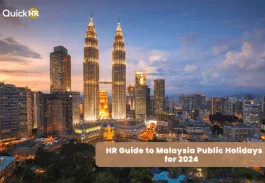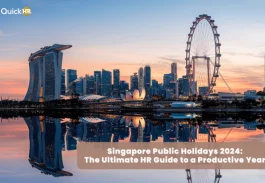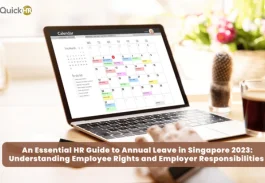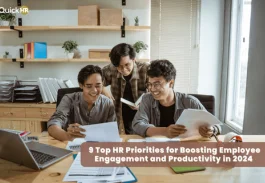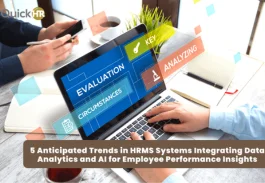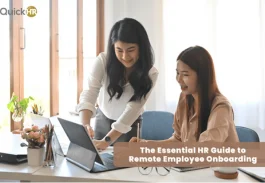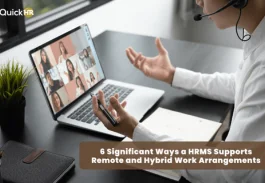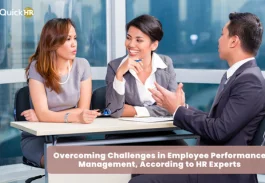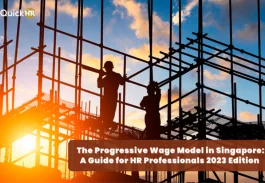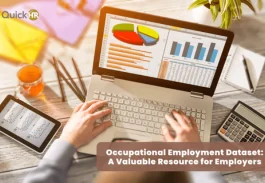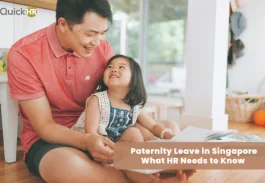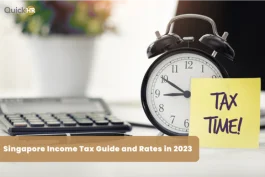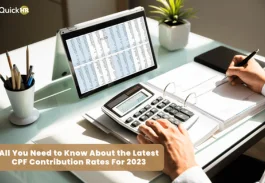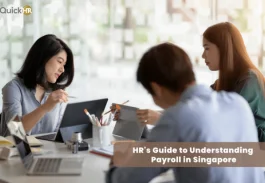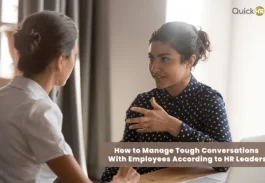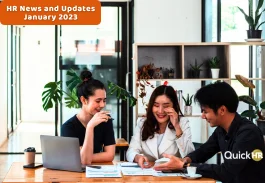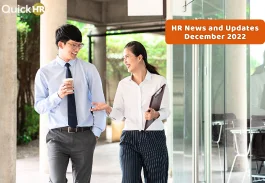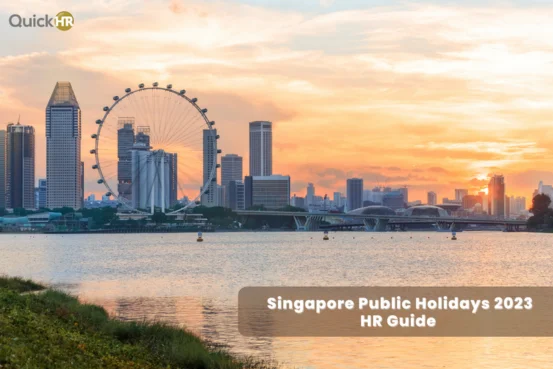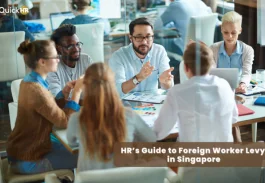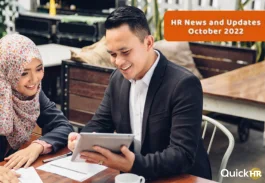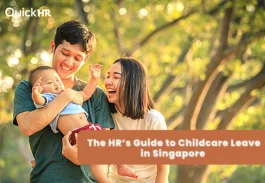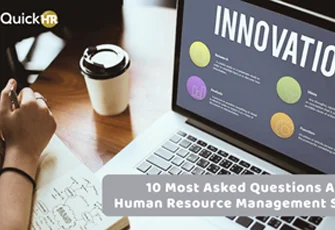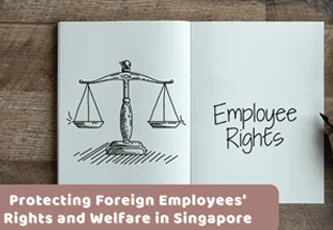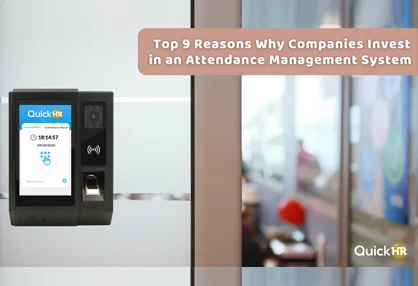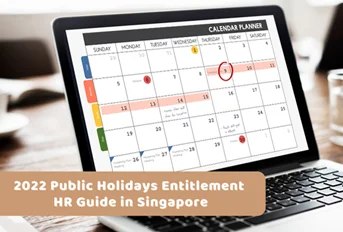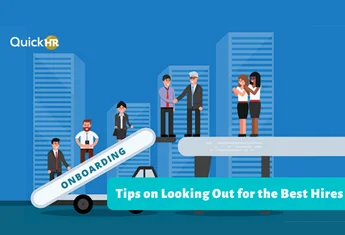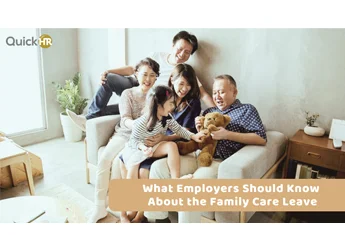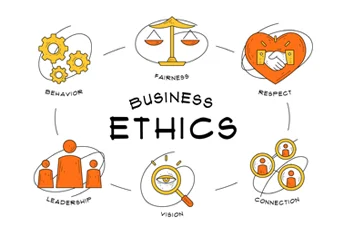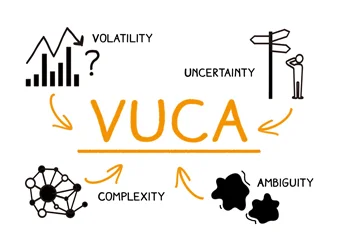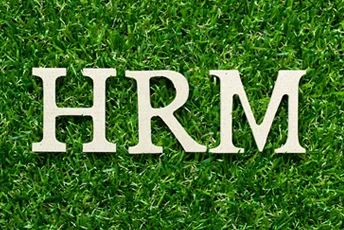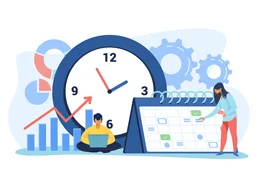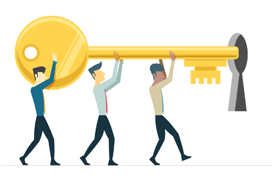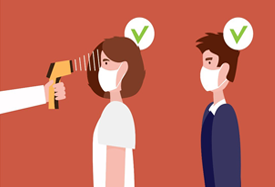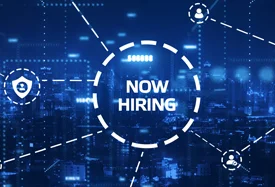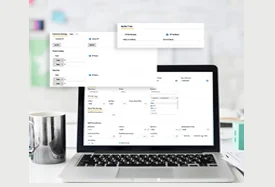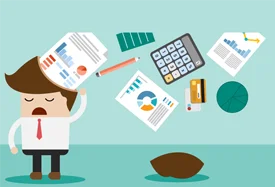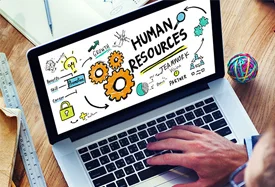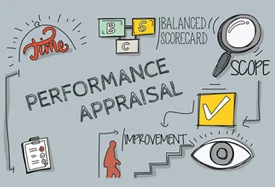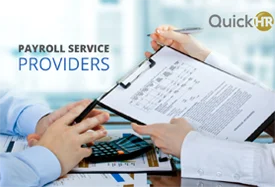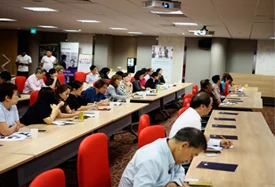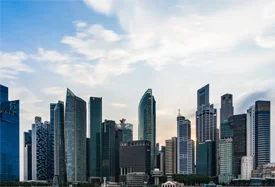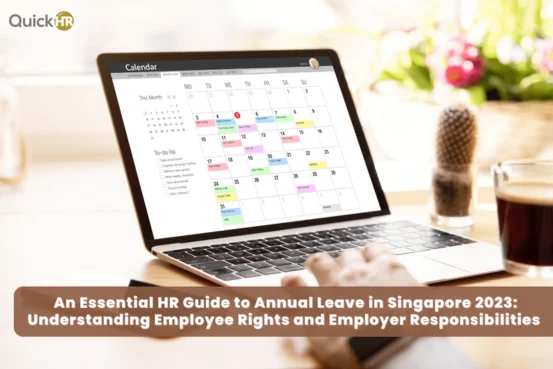
An Essential HR Guide to Annual Leave in Singapore 2023: Understanding Employee Rights and Employer Responsibilities
Posted on 08 December 2023 in Business | Suki Bajaj
Navigating the world of annual leave in Singapore can be a maze of complex government regulations and company policies. But fear not, fellow HR professionals, for this comprehensive guide is here to illuminate your path!
We'll delve into the intricacies of annual leave eligibility and entitlements, and carry-over rules, ensuring you're well-equipped to effectively manage employee leave requests with confidence.
So, buckle up and let's embark on a journey to annual leave enlightenment!
In this article, we'll talk about:
What is Annual Leave
Is Annual Leave Mandatory in Singapore
Who Is Eligible for Paid Annual Leave
How Is Annual Leave Calculated
How to Pro-rate Annual Leave
How Pro-rated Annual Leave Is Calculated
Can Annual Leave Be Carried Forward or Encashed in Singapore
What If the Annual Leave Is Used Up (Unpaid Leave)
What If the Employee’s Shift Exceeds 8 Hours
Other Types of Employee Leave Entitlements in Singapore
What is Annual Leave?
Annual leave is a form of paid time off for employees to take a break from their work duties to rest and rejuvenate. The specific number of days granted per year varies depending on the employer's policies and the employee's tenure with the company.
Is Annual Leave Mandatory in Singapore?
In accordance with the Employment Act, annual leave is a compulsory benefit for employees in Singapore. This legal obligation ensures that employees receive a designated number of paid leave days each year.
Who Is Eligible for Paid Annual Leave?
Under the Employment Act, all employees are eligible for paid annual leave if they have worked for their employer for at least 3 months.
How Is Annual Leave Calculated?
Employees' annual leave entitlement is determined by their length of service with the company. Their tenure begins from their first day of employment.
The number of days of annual leave entitlements increases incrementally for each year of service, starting at 7 days in the first year of employment and increasing by 1 day for every subsequent year.
It caps at 14 days after the eighth year. Keep in mind that this is the basic entitlement for every industry practice may differ as established by the Employment Act.
For instance, if an employee begins work on 1 March 25, 2016, the annual leave entitlement will be calculated as follows:
| Period of employment | Completed months of service | Annual leave entitlement |
|---|---|---|
| 25 Mar 2016 to 25 Mar 2017 | 12 | 7 days (1st year) |
| 25 Mar 2017 to 25 Mar 2018 | 12 | 8 days (2nd year) |
| 25 Mar 2018 to 25 Mar 2019 | 12 | 9 days (3rd year) |
💡 Note: An employer is free to offer additional leave entitlements to the employees.
Manage annual leave requests in real-time with QuickHR Leave Management System!
Start your 14-day FREE trial today!How to Pro-rate Annual Leave?
If an employee worked for 3 to 12 months, the annual leave is pro-rated based on the number of completed months they have worked. This applies even if they’re still on probation.
If an employee worked for more than a year, the annual leave is pro-rated based on the number of completed months they have worked in their current year (i.e. from January of the calendar year or the starting month of the financial year of the company).
How Pro-rated Annual Leave Is Calculated?
An employee's annual leave accrual is calculated using this formula:
- (Number of completed months of service ÷ 12 months) × Number of days of annual leave entitlement
If the fraction of a day is less than one-half, round it down. If it is half or more, round it up to one day.
Bear in mind that in case the employee does not complete a full month of service, the days accumulated for the incomplete month are not taken into consideration under MOM guideline.
For example:
For an employee who started on 14 April 2016 and left on 31 August 2016, the number of completed months of service is:
14 April 2016 to 13 August 2016 = 4 completed months
💡 Note: The period from 14 to 31 August 2016 is not counted because it is not a complete month.
If an employee worked for 4 months and is entitled to 10 days of annual leave, the pro-rated annual leave is:
(4 completed months ÷ 12 months) × 10 days of leave = 3.33 days
Rounded down to 3 days as the fraction is less than 0.5.
Can Annual Leave Be Carried Forward or Encashed in Singapore?
Employees covered under Part IV of the Employment Act, including workmen earning a monthly basic salary of $4,500 or less and non-workmen earning a monthly basic salary of $2,600 or less, are entitled to carry forward any unused annual leave to the next 12 months.
In cases where the accumulated unused annual leave exceeds the statutory entitlements, employees should refer to their employment contract for the company's approach to managing such leave. This may include options like encashment, carry-forward to the next year, or forfeiture.
For employees who are NOT covered under Part IV of the Employment Act, they should review their employment contract to determine the treatment of unused annual leave.
What If the Annual Leave Is Used Up (Unpaid Leave)?
Employees may request unpaid leave, also known as no-pay leave, when they have exhausted their paid annual leave or are not eligible for paid annual leave. However, approval for unpaid leave is at the employer's discretion.
If an employee takes more paid annual leave than they’re entitled to, the extra days off will be considered unpaid leave, and their employer can reduce their pay accordingly. So, it's important for employers to keep track of all leave requests, whether paid or unpaid.
What If the Employee’s Shift Exceeds 8 Hours?
For each work shift that exceeds eight hours, employees will earn one day of annual leave equivalent to their actual working hours. This is to provide compensation for the additional time worked on any workday. For instance, if they work a 12-hour shift, 1 day of leave is equivalent to 12 hours.
Other Types of Employee Leave Entitlements in Singapore
In addition to annual leave, the Employment Act outlines various types of leave entitlements for employees. These include:
Sick Leave
Under the Employment Act, employees at all levels are entitled to both paid outpatient sick leave and paid hospitalisation leave if they have worked for a minimum of 3 months with their employer.
Employees who are taking paid sick leave must inform their employers within 48 hours of their absence and must also be certified by a doctor.
The sick leave entitlement is prorated for the first 6 months of employment.
| Completed Months of Service |
Sick Leave Entitlement (Non-hospitalisation) |
Hospitalisation Leave (Outpatient Sick Leave) Entitlement |
|---|---|---|
| 3 | 5 | 15 |
| 4 | 8 | 30 |
| 5 | 11 | 45 |
| 6 and thereafter | 14 | 60 |
For instance, if an employee who worked for more than 6 months has already taken 14 days of outpatient sick leave in a year, the number of days of hospitalisation leave left is 46 days (60 – 14 = 46).
Please remember that the hospitalisation entitlement is inclusive of the sick leave, i.e. the 15 days of hospitalisation leave earned at the end of 3 completed month of work are inclusive of the 5 days of Sick Leave.
As long as there’s a certification from a doctor stating that hospitalisation is required, employees are eligible for paid hospitalisation leave notwithstanding that the employee wasn’t warded in hospital.
Childcare Leave
Singapore's childcare leave is in accordance with the Child Development Co-Savings Act (CDCA), depending on specific criteria.
An employee is eligible for Government-Paid Childcare Leave (GPCL) as long as they meet the following requirements:
- Has a child under 7 years of age.
- The child is a Singapore citizen.
- The biological parents are lawfully married, including divorced or widowed parents.
- For employees: must have served their employer for at least 3 continuous months.
- For self-employed: must have been engaged in their work for at least 3 continuous months and have lost income during the childcare leave period.
The childcare leave entitlement is identified depending on whether they are covered under the Childcare Development Co-Savings Act (CDCA) or the Employment Act.
Under the Childcare Development Co-savings Act
Eligible working parents of Singapore citizen children are entitled to 6 days of paid childcare leave per year.
Both parents can each get 6 days per year of childcare leave until the year their child turns 7 years old, regardless of the number of children they have. Childcare leave is capped at 42 days for each parent.
Childcare leave will be prorated for employees working fewer than 12 completed months.
Working parents with children between the ages of 7 and 12 (inclusive) are eligible for extended childcare leave.
Under the Employment Act
On the other hand, working parents of non-Singaporean citizens can get 2 days of childcare leave a year in accordance with the Employment Act.
For part-time, temporary, contract or probationary employees, the childcare leave entitlement is adjusted based on their working hours.
Check out our ultimate guide to HR Childcare Leave in Singapore to find out the childcare leave eligibility and entitlement on specific situations.
Maternity Leave
The government provides comprehensive maternity leave policies to provide the working mothers with the necessary resources and support to aid them during their journey to motherhood.
Under the Government-Paid Maternity Leave (GPML) scheme, an employee will be eligible for paid maternity leave if they meet the following requirements:
- The child is a Singaporean citizen.
- The child is born or has an estimated delivery date (EDD) on or after 1 January 2017.
- The employee has worked for the employer or has been self-employed for at least 3 continuous months before the birth of the child.
Working mothers will be entitled to either 16 weeks or 12 weeks of maternity leave, depending on whether the child is a Singapore citizen and other criteria.
For employed working mothers, they will be eligible for 16 weeks of paid maternity leave if they have served their employer for a continuous period of at least 3 months before the birth of their child.
Self-employed working mothers will be eligible of 16 weeks for paid maternity leave if they have been engaged in their work for at least 3 continuous months and have lost income during the maternity leave period.
Maternity leave entitlements may be affected by different criteria or situations, such as the birth of twins, the birth to a single mother, premature birth, or stillborn.
Take a look at our all-inclusive HR Guide to Maternity Leave in Singapore to know more about the terms and conditions that fall under the maternity leave entitlement in Singapore.
Government Paid Leave Schemes
The government has introduced several paid leave schemes to establish a pro-family system and to support young families.
This scheme consists of the following:
- Childcare leave
- Extended childcare leave
- Paternity leave
- Shared parental leave
- Adoption leave
- Infant care leave
💡 Note: As announced in Singapore Budget 2023, the government-paid Paternity Leave will be doubled from two to four weeks, for fathers of Singaporean children born from Jan 1, 2024.
The Unpaid Infant Care Leave will also be doubled for each parent in the child's first two years, from the current six days to 12 days per year.
Take a look at our blog on Family Care Leave to know more about the different leave types, eligibility, and more.
Streamline Annual Leave Management with QuickHR
With QuickHR’s all-inclusive Leave Management System, you can easily track employee leave balances (including accrued and used leaves), approve/deny leave requests in real time, automatically calculate leave entitlements based on MOM regulations, and generate in-depth reports.
QuickHR Leave Management System is interconnected with multiple HR modules such as payroll, attendance and timesheets, expense claims, and performance evaluation, helping you build a solid HR strategy with automated, simplified, and accurate HR processes.
If you want to know more about QuickHR, you may contact us or book a FREE trial with absolutely no terms and conditions!
Enjoying this content? Subscribe and we’ll send the latest updates and special offers directly to your inbox.
